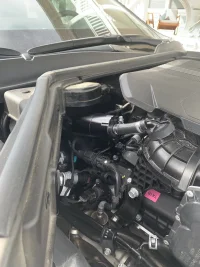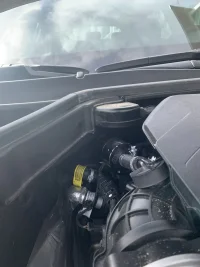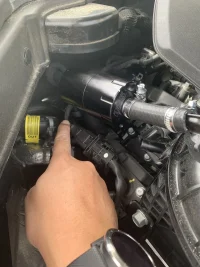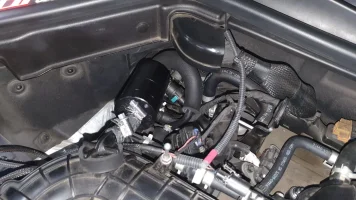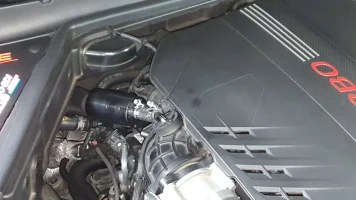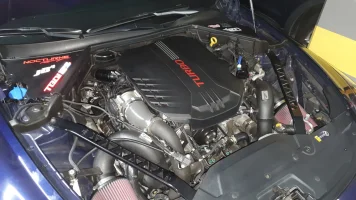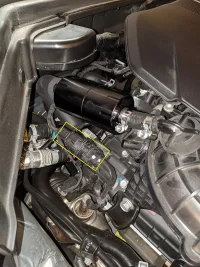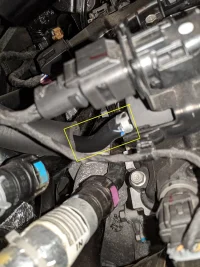I received my Zero Maintenance OCC from BMS today, took all of about 5 minutes to install.
Build Quality: Overall I'd say the build quality is good, the thread profile was good, providing a tight fit when the two ends of the catch can were screwed together. The dual baffles appear to be decently offset, prohibiting direct pass through with no obstruction (holding the baffled end up to a light I couldn't see directly through). Air passage was somewhat restricted, as one would expect - its baffled.
Installation: The supplied hose was still pretty long (I had read BMS was shortening the supplied hose). I ended up removing approximately 3/4" (1.9cm). With the stock PCV hose, it is a tight fit. Because the position of the stock PCV hose is moved back toward the firewall, it will put pressure on one of the electrical connectors (highlighted in yellow box, haven't ID'd the connector yet). Like others, I would
recommend disconnecting the electrical connector, and rerouting the stock PCV hose behind it, removing that pressure on the cable. Even with the rerouting and the shortened hose, there is more of a bend at the bottom of the stock hose than I'd like (also highlighted in yellow box). You could trim that hose too, though keep in mind it's tapered, so just trim the end coming from the OCC.
Post-Install: I did a quick test drive, stopping along the way to check fitment - everything was fine. The OCC does get hot, as you'd expect. I suspect that even with the heat of the OCC, the temperature delta between the can and the PCV system is sufficient to allow oil to condense.
Overall: I like the design, quality is good, and I'll check back in a few thousand miles to see how things are going.
General OCC Thoughts: GDI-only engines have issues with carbon build-up, I think that's just a fact of life until Kia starts implementing dual port and direct-injection systems (assuming they do at all). Fuel additives of course won't do a damn thing with carbon build-up on valve head, fillet, and
seat face. From what I have seen, chemicals like SeaFoam and CRC GDI IVD only do minimal cleaning of established carbon build-up. Soaking the intake in those chemicals can work, but it's more likely that removing the carbon with a physical brush / media blasting is likely the best option. HumbleMechanic on youtube has some detailed thoughts on GDI carbon build-up (working extensively with VW GDI turbo engines). ChrisFix has also tried a number of cleaners, with less than stellar results. The Stinger seems to have some oil pass through on the PCV side, and very little to none on the CCV side. Most of the videos I've seen, the person posting is amazed at what their OCC is catching... but the majority of that seems to be water and fuel. I have yet to see someone dump out their OCC and separate the oil from the water / fuel mixture, and measure the amount of actual oil. Will an OCC make a difference in the long-run? Yeah probably a little bit, but it's not a cure-all. GDI is still going to be GDI, and if you're keeping the Stinger long term you'll likely have to have a dealership or good mechanic perform a physical removal of carbon build-up at some point.


